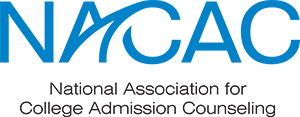During the 2020-2021 school year, 60% of students met the criteria for one or more mental health problems. What resources are readily available to students is quickly becoming a priority for many high schoolers as they navigate college research. In this blog, we will share the types of mental health services on college campuses.
As a Collegewise counselor, I am having more and more conversations with students about mental health in the application and admission process. In many cases, that spills over to the college search, and a school’s available mental health and wellness resources become part of the criteria for what a student may be looking for in their college environment. The National Education Association’s survey of college students earlier this year found that growing percentages of college students are reporting feelings of depression and anxiety. I see it in my work with students before we even get to conversations about the college search and application process. They’re taking increased courseloads that are leaving them feeling more stressed than ever, feeling a sense of competition or comparison among their peers, and are often struggling with feelings of isolation and loneliness.
But what happens when:
- You get to college and experience feelings of anxiety or stress?
- You don’t have the usual support mechanisms that you’re used to from home?
While we are not licensed mental health professionals, our goal is simply to share information and provide a breakdown of mental health services on college campuses, including student health and wellness centers, mindfulness courses, and more.
Why is this important? High school and college are critical transitional times in a person’s life—there is so much to juggle with academic, social, and emotional growth. It’s a lot for anyone to navigate. Studies show that improved physical and mental health correlates with greater student success and happiness.
It is impossible to limit a mental health struggle to any one thing. Experiences with anxiety, stress, or depression can stem from anything in our lives, no matter how “big” or (seemingly) small. Whether it’s the first feeling of rejection (or, as I like to call it, redirection) from not getting a coveted internship position you applied to, or unpacking deeper traumas, building the language and coping mechanisms to face these challenges has become more important than ever.
A mental health crisis or struggle can involve (but is not limited to):
- Depression
- Anxiety
- Psychiatric diagnoses
- Homesickness
- Loneliness/isolation
- Disordered eating
- Substance misuse
- Social anxiety
- Financial stress
- Post-traumatic stress disorder
Below, we’ll dive into the variety of mental health resources available on college campuses, questions to consider when investigating these opportunities, and additional information to help connect you to resources that are right for you.
Student Health and Wellness Centers on College Campuses
While, in many ways, conversations around college student mental health and wellness have accelerated in recent years, the idea of establishing a center on campus to address these needs is hardly new. In fact, Amherst College is credited with establishing the first college health program, back in 1861. Princeton established the country’s mental health service focused on student mental health over 100 years ago, in 1910. Not only is your resident Student Health Center your go-to for check-ups and physical exams, but colleges are constantly expanding services to address mental health and wellness.
Traditional offerings like counseling and psychological services are often the first resources you may find in a Student Health Center, with opportunities for either individual or small-group counseling. CAPS (Counseling and Psychological Services) is a common acronym on college campuses. The University of Michigan’s CAPS office facilitates small-group support meetings like Conquering Social Anxiety, Eating and Body Image Support Group, Untapped Brilliance with ADHD, and Strength in Vulnerability. Sometimes, arriving in a new city and not knowing where to start when looking for mental health professionals and referrals can feel challenging. The advent of telehealth has also made it easier for students to continue seeing their home providers.
Accommodations
The CAPS office is often where you’ll find disability advocacy and support services, too (if not in a separate Office of Disability Services). While mental illness may be “hidden” or less visible than other physical differences, there are many different accommodations you may be able to take advantage of when needed (and often with the appropriate documentation). The University of Washington’s Disabilities, Opportunities, Internetworking, and Technology (DO-IT) service offers accommodations for students with psychiatric disabilities. These accommodations can include notetakers, alternate-format exams, advance notice of assignments, and more. We recommend completing an initial Intake when you arrive on campus, if not before, to speak with a professional at your college and learn of the various accommodations and resources that may be available to you. (And be sure to read our blog post on testing accommodations for the SAT/ACT.)
Orientation Sessions
There are often opportunities to engage with mental health resources even before a student sets foot on campus. At Florida State University, incoming students undergo a mandatory online module through the Student Resilience Project on building skills to cope with anxiety, stress, and other traumas. FSU is often lauded for its efforts to address student trauma and resilience. In fact, FSU’s Institute for Family Violence Studies has even created an online training module for educational professionals to learn more and become certified in college student wellbeing, trauma and resilience. The expansion of programs like this one seeks to widen the safety net of trusted, capable, and informed community members to aid students through this transitional time in their lives. Northwestern University’s Wildcat Welcome orientation structure includes True Northwestern Dialogues, a series (during orientation and into the school year) of required modules on topics including wellness. In many places, the format and delivery of these trainings has also started to shift over time, with more schools moving away from bringing in outside experts and increasing opportunities for peer-initiated and –facilitated conversations.
Mindfulness Courses
Many colleges' courses dedicated to mental health and wellness are built directly into the curriculum (whether required or elective). For example, Brandeis University offers a program called RISE (Resilience, Information, Skills, and Experiences) to help students build healthy habits of resilience when coping with stress, as well as other skills to ease the college transition, like goal-setting and time management. Dartmouth and Kent State University are just two of many colleges that have implemented a curriculum through Koru Mindfulness, a blended-format curriculum program designed to help students manage stress, get better sleep, and find balance. Dartmouth also offers mindfulness drop-in sessions and recorded meditations for students to access anytime, anywhere.
Student Clubs and Programming
There are even more resources for mental health outside the classroom. One of the most prominent student mental health organizations I’ve seen on a college campus is Active Minds. Active Minds is a national nonprofit dedicated to increasing education, awareness, and conversations on mental health. Organizations such as Active Minds tap into the unique peer-counseling model, which can often lower the barrier to entry when it comes to difficult conversations and help it to feel less stigmatized. Last year, the organization’s Healthy Campus Award went to Auburn University, Virginia Tech, Barstow Community College, Stevens Institute of Technology, and the University of South Florida for their efforts to promote inclusivity and student mental health and wellbeing. More and more organizations like Active Minds are popping up on college campuses all over the world, including Batyr and the National Alliance of Mental Illness (NAMI). I’m even starting to see this at the high school level, too—one of my juniors this year is starting an Active Minds club at her school, and Active Minds reports having over 600 active chapters nationally, at both the high school and university level.
At campuses across the country, colleges are designing their own programming centered on building supportive communities for students to address mental health challenges. The University of Michigan’s Counseling and Psychological Services (CAPS) center oversees a number of student organizations under the umbrella of mental health, including the Wolverine Support Network, the university chapter of the National Alliance on Mental Illness, Depression Center Student Advisory Board, and more. George Mason University’s Center for the Advancement of Well-being hosts a slate of mindfulness events throughout the semester, with multiple “Mindful Mason Moments” per semester to give students a chance to pause, reflect, and be present. There are ongoing painting and self-reflection activities, as well as a “Be Your Own Best Friend” event to address having a positive relationship with oneself.
Mental Health Apps
Back in the day, the Student Health Center was, if not the only, probably the first place a student found themselves when they needed a little support- that's where I went when I turned to counseling in college. Now, so many tools are available to students right in the palm of their hand or on their screen. Many colleges have partnered with apps or online tools designed to give students even easier access to mental health resources in the palm of their hand. In the busyness of classes and activities, connecting with a mental health professional or finding an outlet for stress can be as easy as a quick swipe of the phone screen. Apps like togetherall, SAM (Self-Help App for the Mind), or MindShift can give students a safe space (and, in the case of togetherall, an anonymous peer forum) to express their anxieties and connect with others. Schools such as Hofstra University, Loyola University Maryland, and the University of Maine have a list of recommended apps for students to download to address anxiety and help to process emotions.
Intersectionality and Identity
As in all of our #IEAseries blog posts, we want to highlight the importance of intersectionality and identity in this space. While increased conversations around mental health challenges and traumas often show us that more shared experiences unite us, there are nuances of mental health and well-being unique to a person’s identity or identities and related traumas or lived experiences. It is well-documented that Black, Indigenous, and People of Color (BIPOC) students experience higher levels of emotional stressors than their white counterparts. A prominent Healthy Minds Study from 2012-2015 examined the disparities in access to mental healthcare among college students, and found that BIPOC students experienced much greater degrees of unmet mental health needs than white students. Knowing this, many colleges have expanded their identity-based mental health counseling. For example, Kalamazoo College’s Counseling Center offers a list of mental health resources for Black students, including the Community Healing Project, Black Girl Smile, and more. Similarly, Saint Louis University’s counseling services offer robust mental health resources for students of color and for LGBTQIA+ students. Cornell University has CAPS Community Liaisons that serve the following student populations: Black; Latinx; Asian Pacific Islander Desi American; Indigenous; low-income; first-generation; and LGBTQIA+ students.
First-generation college students also face unique needs when it comes to mental health and well-being. Growing up outside of a college-going culture or without the same level of cultural or educational capital as others can make a college transition look different. Wake Forest University’s First in the Forest program aims to create a supportive community of first-generation college students on campus, to find commonalities and to address the unique experiences transitioning to the university. Penn State has a First-Gen Advocates student group to promote mentorship for first-generation students.
The question of whether or not to utilize campus mental health resources is a personal one. I’m grateful that conversations around mental health and wellbeing are becoming much more commonplace now than when I was in college fifteen years ago. I can only hope that we continue to have more open conversations about accessibility to mental health resources. Let this guide be a starting place as you investigate the many—and constantly growing—resources out there to connect college students to the support they need to live their healthiest lives.
Additional Resources
- One Hundred Years of College Mental Health; Journal of American College Health
- How Colleges Today Are Supporting Student Mental Health; Greater Good magazine from the University of California- Berkeley
- The Clay Center for Young Healthy Minds
- The Mental Health Coalition’s College Mental Health Toolkit
About Us: With more than twenty years of experience, Collegewise counselors and tutors are at the forefront of the ever-evolving admissions landscape. Our work has always centered on you: the student. And just like we’ve always done, we look for ways for you to be your best self - whether it’s in the classroom, in your applications or in the right-fit college environment. Our range of tools include counseling, test prep, academic tutoring, and essay management, all with the support of our proprietary platform, leading to a 4x higher than average admissions rates.




.png)

